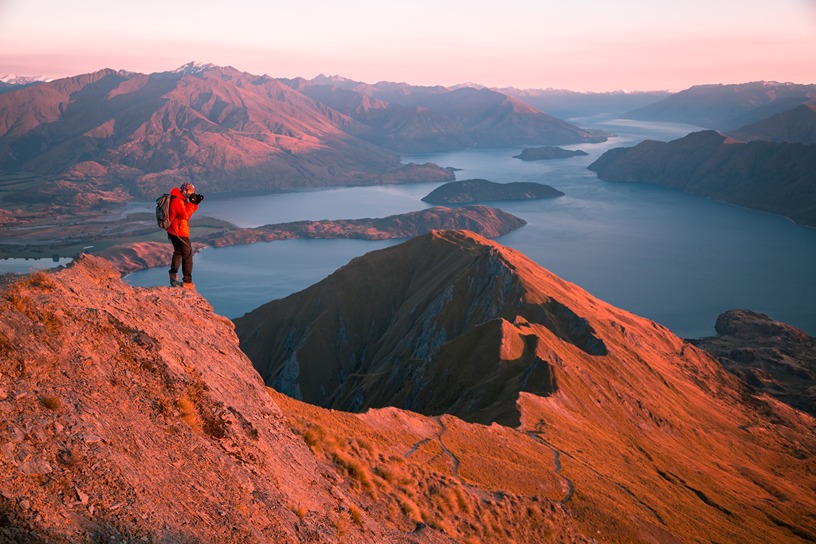
With another majestical mountain, photographic lake or impressive valley around the next corner, trail etiquette can sometimes be forgotten. However, it’s important to be mindful of other people on walking tracks and aware of New Zealand hiking etiquette — so you can seamlessly blend into the local landscape.
In this blog, we look closely at the unspoken guidelines of hiking trails when you’re on a campervan hire holiday in New Zealand. From friendly greetings to encountering livestock, and respecting Māori culture to sharing the trail, we go over everything you need to know.
|
Contents |
Greeting your fellow hikers
.jpg?width=847&height=565&name=Kepler%20Track%20(Miles%20Holden%20-%20TNZ).jpg)
In some cultures, it’s customary to only greet the people you know when you’re out and about. In New Zealand, it’s considered good manners to greet other hikers, walkers and even campers — even if you don’t know them. A friendly hello, howdy or kia ora will:
- Acknowledge your fellow hikers on the trail — small greetings can go a long way
- Foster a sense of community — especially if you’re on a longer hike with fewer people
- Often bring out a smile or a reciprocal response.
You can hike some trails without seeing another person for hours, while others can be hugely popular and crowded. Be open to making eye contact and even striking up a conversation, and you may just discover some local tips on where to hike next.
|
Kia ora Kia ora is a warm greeting that you'll often hear as you travel by motorhome hire across New Zealand. It comes from the indigenous Māori language and means more than simply saying hello — it acknowledges everything about a person, including who they are and where they come from. |
Sharing the trail

Like in other parts of the world, safety is of primary importance when you’re hiking in the natural environment.
New Zealand’s vast network of walking tracks are for everyone — young or old, fast and slow, experienced or not. Being considerate and patient when encountering other people on the trail not only makes for a more enjoyable experience, it’s also generally expected.
One common courtesy that’s fairly universal is that uphill hikers should get right of way. If you’re walking uphill with a pack, you’ll obviously be working a little harder than those coming downhill — and want to maintain your momentum.
You can be courteous on New Zealand trails by:
- Giving way to uphill hikers
- Stepping aside to let faster hikers go past
- Walking in single file if you’re part of a large group — especially on narrower tracks
- Passing oncoming hikers on the left — as is common in New Zealand when walking on the footpath, cycling or driving.
Read our blog on the best campervan sites to park up — some of which are near popular hikes across the country.
Enjoying the sounds of nature
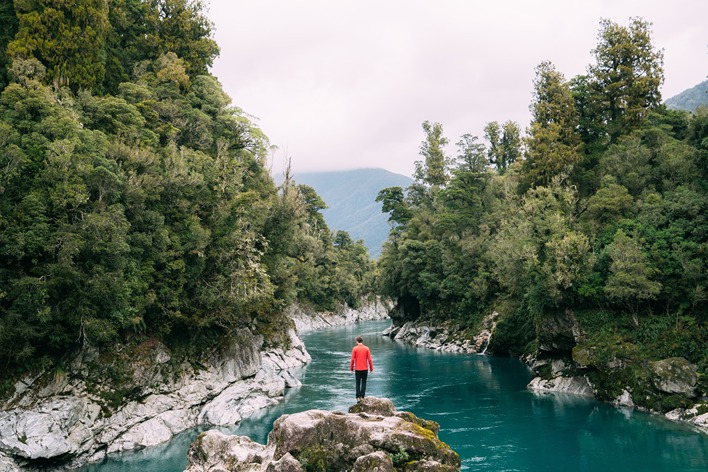
Rather than creating your own soundtrack of chat, radio or a playlist through your portable speaker or headphones, embrace and listen to the sounds of nature while hiking. Many walkers don’t want to hear the sound of other people when they’re searching for a little solitude in the bush.
If you can keep talking and the volume of any chat to a minimum, New Zealanders on the trail will be thankful for it. Native wildlife will also appreciate it — allowing you to see some weka, tūī, pīwakawaka (fantail) and even kiwi.
|
Hiking etiquette extends to the digital world Is it time to disconnect from the digital world and reconnect with the natural one? A campervan rental holiday certainly gives you the chance to take a break from your devices. However, the most important thing is to use social media and your phone respectfully on New Zealand trails by:
|
Entering huts
If you’re planning a motorhome rental vacation, you’re probably not going to be sleeping overnight in any huts in the New Zealand backcountry. However, you may pass the odd hut while hiking and you’re welcome to take a look inside, have lunch, seek shelter or just rest.
The New Zealand hut network is expansive, well-run and excellently taken care of by users. A few hut guidelines include:
- Removing your hiking boots — fellow hikers won’t look too fondly on you if you waltz in with a big pair of muddy boots on
- Carrying it in, carrying it out — so if you do stop at a hut for lunch, be sure to take all your rubbish with you
- Keeping them clean and tidy — leaving no trace before you move on.
You can find more information about New Zealand huts on the Department of Conservation (DOC) site.
Leaving no trace

Similarly to moving on from a New Zealand backcountry hut, you should complete each trail having left no trace of being there. It’s a belief that many New Zealanders aim to live by and comes with seven principles which are:
- Plan ahead and prepare
- Travel and camp on durable ground
- Dispose of waste properly
- Leave what you find
- Minimise the effects of fire
- Respect wildlife and farm animals
- Be considerate of others
Learn more at Leave No Trace New Zealand.
|
Tramping in New Zealand You’ll likely hear New Zealanders refer to going tramping in the mountains — rather than hiking. Tramping is the local term used to describe a decent hike in the outdoors. Perhaps closer to trekking than hiking, tramping usually conjures up images of long multiday hikes with a pack, though it can also refer to lengthy day walks. |
Staying on track
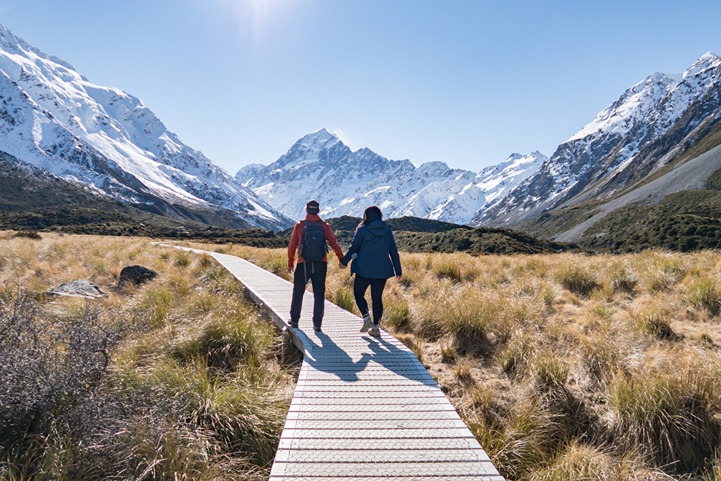
When you’re hiking in New Zealand, try to take in the incredibly diverse landscapes from the designated trail.
It can sometimes be easy to get over-excited when stumbling across a watering hole or seeing a surreal panoramic view — it can be natural to wander off the trail. However, marked trails are there for a reason and straying off them can disturb wildlife habitats, damage natural vegetation and even get you lost.
Find out more about staying safe during your hiking expeditions.
Looking out for livestock
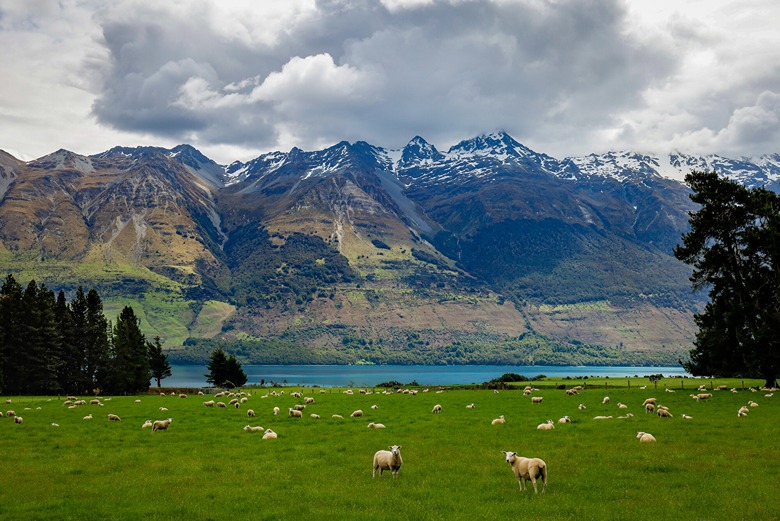
It’s a common sight to wander along a New Zealand hiking trail and encounter cattle or sheep — as many tracks go through working farms. It’s nothing to be alarmed about and the livestock will keep to themselves if you do the same and observe them from a distance without surprising them.
You may also come across cattle stops that prevent stock from crossing yet allow vehicles. Farm gates are also fairly common — with the golden rule being to leave it as you find it. It may be closed to keep stock in or out and will have an easy-opening latch so you can pass through.
As in other countries, avoid blocking an animal’s exit route and never get between a mother and her baby.
|
Using a drone on the trail Rules for using drones in New Zealand are quite strict. You can’t fly a drone over private land without permission from the landowner — and you can’t fly one over public conservation land without approval from DOC. Find out about using drones in National Parks and how to apply to use a drone on public conservation land. |
Being self-sufficient
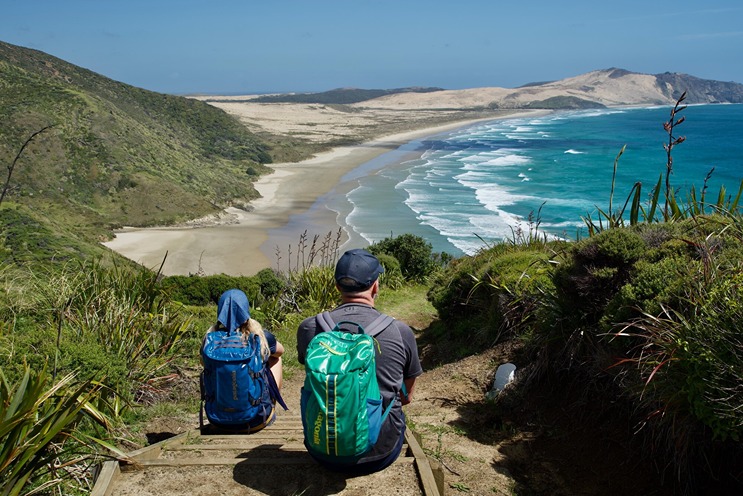
New Zealand’s weather can change very quickly. You can be playing golf in epic sunshine one minute and running to the car to avoid a hailstorm the next. Likewise, you can be climbing a mountain pass in dry weather, then blasted by southerly rain seconds later as you cross over to descend.
Preparation is key to being self-sufficient and able to handle changes in weather — even for short day walks. As a minimum, pack a small backpack with light rain gear, an emergency blanket, sunscreen, mosquito repellent, a hat, snacks and water.
Be sure to wear hiking shoes or boots that can handle changes in trail conditions and weather. And as you would back home, check these elements before reaching the trailhead.
See our top ten travel apps blog which calls out the useful Plan My Walk app.
Respecting Māori culture
.jpg?width=1008&height=568&name=Mount%20Hikurangi%20(Eric%20Hanson%20-%20TNZ).jpg)
Plenty of trails in New Zealand pass over areas of cultural significance to Māori. One such example is the peak of Mount Taranaki which is taonga (treasure) as it’s considered the head of an ancestor. As such, it’s forbidden to stand or eat on the summit, among other things.
Often you’ll see DOC signage on each trail informing about what parts are culturally sensitive and must be treated with respect. You can also visit or call a DOC office before arriving to get clarity on what you can and can’t do on a particular trail.
Find out more about showing respect in the New Zealand outdoors.
By treading lightly, leaving only footprints, and respecting the local community and environment, you’re already meeting a lot of the country’s hiking etiquette.
Check out New Zealand’s best hikes and walks.



